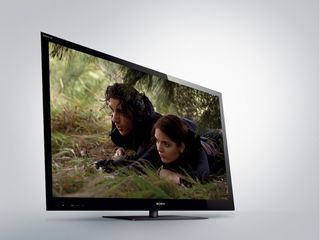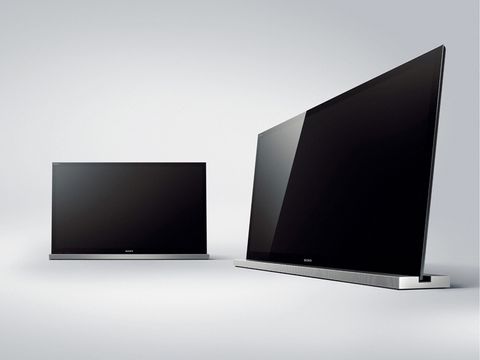Why you can trust TechRadar

The KDL-46NX713's performance is the proverbial game of two halves – 2D performance is excellent but 3D performance leaves a lot to be desired. Thankfully, with precious little 3D content available, 2D will form the bulk of your viewing diet and on that score the Sony is very tasty indeed.
Tune into any of the Freeview HD channels – BBC One HD, BBC HD, Channel 4 HD or ITV1 HD – and you're instantly treated to bright, piercingly sharp pictures, bursting with rich colours that contain none of the ugly blocking artefacts that plague regular Freeview pictures. There are lashings of detail in the picture, and during fast-moving sports broadcasts that detail stays clear and steady, thanks to the sterling efforts of MotionFlow. There's no motion blur or judder to speak of either, although crank the settings up too high and you can see some minor artefacts fluttering around the screen.
Blu-ray pictures look even better. There's an extra sheen to the image and even greater detail – textures and patterns look razor sharp, and when the camera pans MotionFlow once again keeps everything looking crisp and stable.
The KDL-46NX713 also musters reasonably deep blacks and an impressive contrast level, which gives movies a satisfyingly solid, cinematic look. That plays well when watching movies like Inception or The Dark Knight with their deep, lustrous cinematography.
We also marvelled at the set's colour reproduction, which stays the right side of natural with subtle tones but handles bold, vibrant hues with pleasing intensity. There are some problems with the LED backlight, which leaves pools of light skulking in the corners and can be most clearly seen in the black bars of letterboxed movies but it's not particularly distracting.
So 2D performance is impressive but sadly its handling of 3D content is not up to the standards we've come to expect. We loaded up the 3D Avatar disc and the image is beset by crosstalk, which makes the various layers seem blurred and makes objects hard to focus on.
As the camera moves through the layers of tree branches during the 'First Sortie' chapter, the leaves and creatures have a distinct ghostly outline, while the definition of the background flora is vague. It prevents you from getting immersed in the image in the same way as you do with one of Panasonic's plasmas, for example.
You can lessen the impact of this crosstalk slightly by fiddling with the depth settings in the Options menu, but it's never quite satisfactory. We also tried Monsters Vs Aliens, and if anything the problem is worse, particularly during the tricky Golden Gate Bridge sequence.
The set will also convert 2D content into 3D, but this also falls flat, so to speak. With most discs there's precious little evidence of added depth or layering. It provides one or two flashes of inspiration with scenes that lend themselves well to 3D, but apply it to TV programmes or DVD and it's a waste of time. We're sure this technology will get better with time but for now it just doesn't cut the mustard.
Current page: Sony KDL-46NX713: Picture quality
Prev Page Sony KDL-46NX713: Features Next Page Sony KDL-46NX713: Sound, value and ease of use
